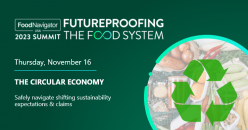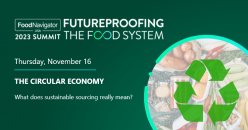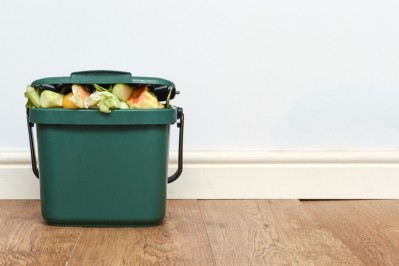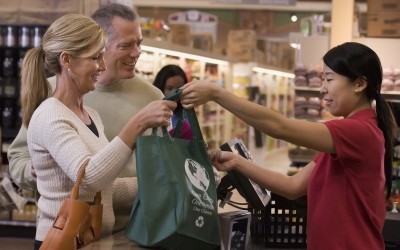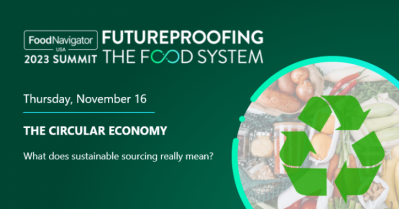[On-demand event] Sustainable innovation: How CPG brands can redesign packaging with compostability in mind
![[On-demand event] Sustainable innovation: How CPG brands can redesign packaging with compostability in mind](/var/wrbm_gb_food_pharma/storage/images/_aliases/wrbm_large/publications/food-beverage-nutrition/foodnavigator-usa.com/article/2023/11/20/on-demand-event-sustainable-innovation-how-cpg-brands-can-redesign-packaging-with-compostability-in-mind/16938585-1-eng-GB/On-demand-event-Sustainable-innovation-How-CPG-brands-can-redesign-packaging-with-compostability-in-mind.png)
“It's really important to make sure that when you're looking at composability, you're not seeing it as a panacea. There is no one fix to the packaging problems that we're facing around the world, and really where we see the composability sweet spot is for non-reusable, non-recyclable food-associated packaging. So, something like a lightweight multi-layer flexible food package is a prime example of a good use case.”
Ensuring sustainable packaging meets function, consumer demands
Consumers are “really fueling a lot of interest in the switch to composability,” and many CPG companies have invested in new packaging types to meet both sustainability and consumer demands, Yepsen explained during the session (watch on-demand here).
PepsiCo’s Off The Eaten Path chips are packaged in a compostable bag, while dairy co-op Arla trialed a biodegradable cap for its products earlier this year.
“What we're seeing a lot of movement around is in the R&D space is first figuring out how do we really switch to these new novel materials that allow for composability. Can we still reach the necessary shelf-life, oxygen barrier, [and] grease barrier before we also make sure that it meets the composability specification and also has to meet user-friendliness?”
As more companies invest in sustainable packaging types, they need to ensure that the product is meeting the demands of consumers and keeping products secure and safe, Yepsen said.
“If the packaging can't function with its primary purpose, which is ... keeping that food safe and having long enough shelf life, then we haven't accomplished anything. The last thing we want to do is have a package redesigned for sustainability that then leads to more food waste.”
CPG companies also need to ensure packaging materials are properly tested for compostability and meet regulations, Yepsen said. BPI and other certification programs can help address some of these challenges, he added.
“[Certification programs align] the entire value chain, so you're taking raw materials or biopolymer or raw paper products, working with tests around those materials to qualify them through to the converter through to a brand to a municipality or government to the composter. If we don't have clear communication along that value chain, people start to get confused, and I think that's what we've seen with recyclability as well.”
Consumers get in the dirt with compostability
Consumers also are increasingly interested in composting, partially spurred by the "resurgence of gardening at home during the pandemic, when ... there was a big uptick in ... people wanting to get their hands in the earth," Yepsen said.
Consumers are also confused about what can and should be composted, similar to how there is “so much wish-cycling when people want to do the right thing, and they put a lot of things in the recycling bin that shouldn't be there,” Yepsen said.
However, CPG brands can mitigate this confusion by focusing on adding multiple composability identifiers, wording, and branding to reinforce the idea that the packaging can be composted, he added.
“We found that you really need two to three elements on the product itself for a consumer to be able to identify it as compostable, and so this can be things like coloration, green or brown colors, a third-party certification mark like the one that our organization offers, as well as just the size and prominence of the word compostable.”
Editor's note: To watch the full sessions on-demand, register here for the free FoodNavigator-USA Futureproofing the Food System digital summit.
